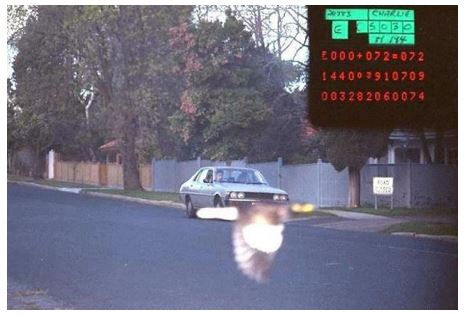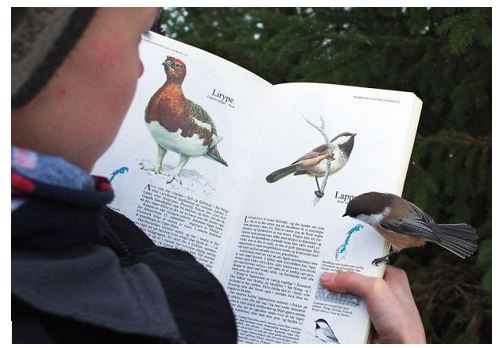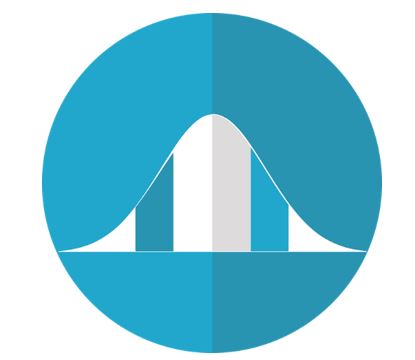I’ll admit it. I love chasing fat tails.
Now, before you try to guess what that means…I’ll go ahead and tell you that you’re probably wrong.
Here are a few examples of what I’m talking about:
 |
Two Collided Bullets from Gallipoli | Source: Bored Panda |
 |
One Egg With Four Yolks | Source: Bored Panda |
 |
Lucky Speeder Avoids Camera | Source: Bored Panda |
 |
Bird That Lands on Page About Itself | Source: Bored Panda |
All unbelievable odds, right?
Well, coincidences like these do happen, although rarely.
And in the world of probabilities, these sorts of events can be visualised with a bell curve, like the one below:
 |
Source: Pixabay |
Your most common data points fall in the middle, visualised by the hump.
Then, on either end, you have your uncommon data points. These ends are called ‘tails’.
So if you were to gather all the people in the world and measure their IQ, the resulting chart would likely look like a bell curve.
Same with grades on a test…
Or the birthweight of newborn babies…
Or women’s shoe sizes…
They all generally follow this smooth symmetrical bell-curve shape.
But, every once in a while, something will happen that throws the curve off. A low-probability event that creates a little bulge on the tail of the bell curve.
Statisticians refer to these odd bulges on the extremities of bell-shaped curves as ‘fat tails.’ Instead of tailing off as they are supposed to, the rare events seem to swell up where you don’t expect them.
The Great Depression was one. Basically, nobody saw it coming. It wasn’t even on the menu. It was a rare and super-low probability event that defied the consensus.
But it happened.
Same with World War II…
In 1938, the idea that another great war was around the corner was the last thing on most people’s minds.
But it happened.
The internet. September 11. The personal computer. The dissolution of the Soviet Union.
All fat-tail events.
Or what Nassim Taleb would call ‘black swans’.
The term can be traced back to 1697, in Western Australia, where the world’s first black swan was recorded. Swans had been around for centuries, but never had a black one appeared. It wasn’t thought possible. It wasn’t thought of at all.
But, in 1697, one was spotted.
The perceived impossibility was disproven, and the paradigm was shattered.
Now, these black swans and fat-tail events aren’t necessarily bad things. Sometimes they come in the form of a novel idea — an innovation that shakes up the very foundation of life.
They don’t occur often…maybe once a decade. But when they do, you had better act quickly. [openx slug=inpost]
Today, I believe we’re catching sight of a fat-tail event beginning to swell.
A black swan around the corner.
A new technology on par with the Internet or the Industrial Revolution.
And I truly believe this event will reshape the lives of your families, friends and every other person on Earth.
All happening in the next 18-24 months.
Those in-the-know struggle to put its potential into words. Research firm, McKinsey & Company predicts this could be ‘the biggest source of all disruptive technologies ahead of mobile Internet, automation, cloud computing, and advanced robotics.’
It’s not something you’d see on the front-page headline of your favourite newspaper….
It’s not something that many investors or fund managers have considered…
It’s not something that the mainstream would expect…
But it’s happening.
And it’s happening here in New Zealand.
In fact, I’ve spent months investigating this trend…and the key players behind it. Most are in Silicon Valley like you’d expect, but one tiny company surprised me.
It’s a company that is heavily involved in this emerging technology. It’s already built a team and created a few unique products. It even has some big-time customers.
The best part? It’s here in New Zealand…headquartered down in Wellington…and even listed on the NZX.
That means any Kiwi investor with a brokerage account can claim an early stake in this well-positioned firm, before this trend really takes off.
And if the trend explodes like my research indicates, in the next 18-24 months, those who own shares in this company could be sitting pretty.
Like potential 300% gains pretty.
But like other fat-tail events, the key is getting in early.
Like buying Microsoft in 1986. Or Amazon in 1997. Or Netflix in 2002.
Sure, you could rack up some double-digit gains with these stocks today, but if you had the foresight to buy them back when they launched, you might be riding on five-, six-, seven-digit returns.
It’s the difference between getting a house with a view of an island…or the island itself.
Now, I’m not here to tell you what you should do with your hard-earned savings. You can certainly watch this train leave the station without getting on. It’s your decision as an independent investor.
But I do ask that you at least give my research a quick look-through…so you can make an educated decision on this potential opportunity.
I’ll be releasing the report tomorrow.
As a Money Morning NZ reader, you’ll get it in your inbox first.
Keep an eye out!
Best,
Taylor Kee
Editor, Money Morning New Zealand





Taylor Kee is the lead Editor at Money Morning NZ. With a background in the financial publishing industry, Taylor knows how simple, yet difficult investing can be. He has worked with a range of assets classes, and with some of the world’s most thought-provoking financial writers, including Bill Bonner, Dan Denning, Doug Casey, and more. But he’s found his niche in macroeconomics and the excitement of technology investments. And Taylor is looking forward to the opportunity to share his thoughts on where New Zealand’s economy is going next and the opportunities it presents. Taylor shares these ideas with Money Morning NZ readers each day.